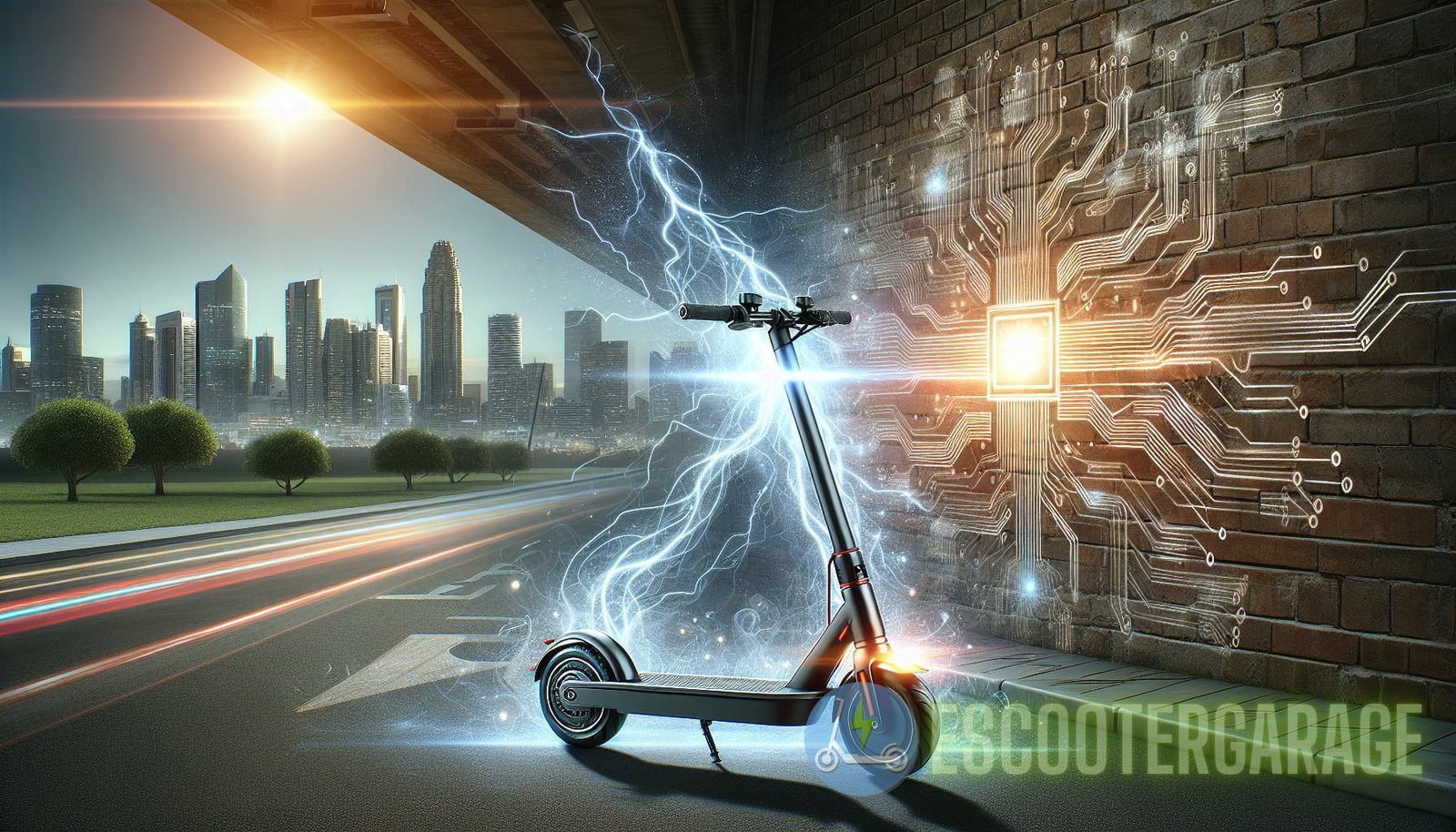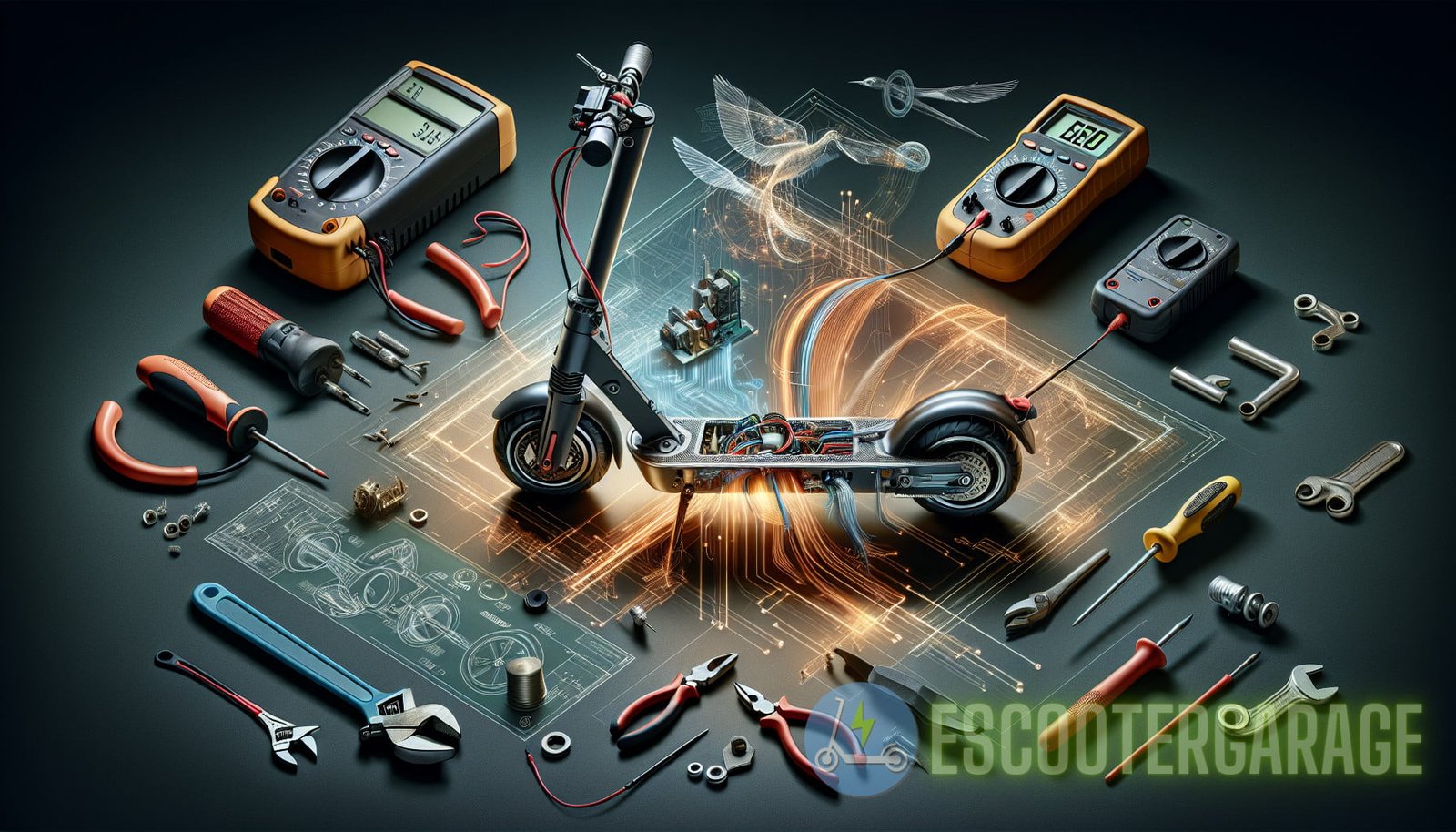Unlocking the Key to Optimal eScooter Performance: Unveiling the Science Behind Maximum Efficiency and Power
Electric scooters, also known as eScooters, have gained immense popularity in recent years as a sustainable and convenient mode of transportation. These compact vehicles offer an eco-friendly alternative to traditional fuel-powered vehicles, allowing riders to navigate busy city streets with ease. However, to fully utilize their benefits, it is crucial to understand the science behind eScooter efficiency and power. Unlocking the key to optimal eScooter performance requires delving into the intricacies of battery technology, motor efficiency, and proper maintenance techniques. In this article, we will explore the factors that influence eScooter performance, providing you with a comprehensive understanding of how to maximize efficiency and power.
1. Battery Technology and Efficiency
One of the primary components that determine eScooter performance is the battery. The battery is responsible for storing and delivering the electrical energy required to power the vehicle. Understanding battery technology and efficiency is vital for optimizing eScooter performance. Let’s take a closer look at the key factors that influence battery efficiency:
a. Battery Chemistry
Different eScooters employ various types of battery chemistries, each with its advantages and limitations. Some common battery chemistries used in eScooters include:
- Lithium-Ion (Li-Ion): Li-Ion batteries offer high energy density, long cycle life, and low self-discharge rates. They are widely used in eScooters due to their reliability and efficiency.
- Lithium Polymer (Li-Po): Li-Po batteries are similar to Li-Ion batteries but offer higher energy density. They are usually more expensive and require specialized handling.
- Lead Acid: Although less common in modern eScooters, lead acid batteries are still used in some models. They are affordable but have lower energy density and shorter cycle life compared to Li-Ion batteries.
Li-Ion batteries are the most common and efficient type of battery used in eScooters today. They provide superior energy storage capabilities and exhibit minimal voltage sag, ensuring consistent power delivery throughout the battery’s charge cycle.
A detailed knowledge of battery chemistry can ensure that you select an eScooter with a battery that meets your efficiency requirements. Additionally, understanding the specific charging requirements of your eScooter’s battery chemistry is crucial for optimizing battery life and performance.
b. Battery Capacity
The capacity of an eScooter battery refers to the amount of electrical energy it can store. Typically measured in ampere-hours (Ah), battery capacity directly impacts the eScooter’s range and performance. A higher-capacity battery allows for longer rides and greater power output.
When selecting an eScooter, consider your daily commuting needs and choose a battery with sufficient capacity to ensure you do not run out of power. It is also essential to note that high-capacity batteries often require longer charging times, so finding the balance between capacity and charging time is crucial.
c. Battery Management System (BMS)
A Battery Management System (BMS) plays a crucial role in optimizing battery performance. The BMS monitors and regulates the battery’s charging and discharging processes, ensuring safety, preventing overcharging or deep discharging, and balancing cell voltages.
It is important to choose an eScooter that incorporates a reliable BMS to maximize battery life and maintain optimal performance. An advanced BMS can increase the efficiency of the battery by minimizing energy losses during charging and discharging.
2. Motor Efficiency and Power Output
The motor is the heart of an eScooter and determines its ability to accelerate, maintain high speeds, and tackle uphill terrain. Motor efficiency and power output are directly correlated with eScooter performance. Here are the key aspects to consider:
a. Motor Type
eScooters generally utilize one of two motor types: brushed or brushless motors. Brushed motors are older and less efficient, requiring more maintenance due to their mechanical components. On the other hand, brushless motors offer higher efficiency, require less maintenance, and provide superior power output.
When choosing an eScooter, opt for one with a brushless motor to ensure maximum efficiency and power.
b. Motor Power Rating

The power rating of an eScooter’s motor is measured in watts. A higher power rating typically results in better acceleration and the ability to maintain higher speeds. However, it is essential to strike a balance between power and energy efficiency to ensure optimal battery life.
If you primarily use your eScooter for short commutes, a lower power rating may suffice. However, if you frequently tackle hilly terrain or require faster acceleration, a higher power-rated motor may be necessary.
c. Motor Controller
The motor controller regulates the flow of electrical energy to the motor, ensuring efficient power delivery. An advanced motor controller can improve motor efficiency by controlling current flow, reducing energy losses, and providing smoother acceleration.
eScooters equipped with high-quality motor controllers offer enhanced power output and overall performance. When evaluating potential eScooter options, consider the reputation and quality of the motor controller used.
3. Maintenance Techniques for Maximum Efficiency
In addition to understanding the technical aspects of eScooter performance, proper maintenance techniques play a vital role in maximizing efficiency and power. Here are some essential maintenance tips:
a. Tire Pressure
Regularly check and maintain the optimal tire pressure recommended by the manufacturer. Underinflated tires can increase rolling resistance, decreasing battery efficiency and reducing range.
b. Brake Adjustment
Ensure that the brakes are properly adjusted and not rubbing against the wheel when released. Rubbing brakes create additional friction, leading to reduced efficiency and power output.
c. Chain Lubrication
If your eScooter has a chain-driven system, regularly lubricate the chain to reduce friction and extend its lifespan. A well-lubricated chain ensures optimal power transfer from the motor to the wheels.
d. Regular Cleaning
Keep your eScooter clean and free from dust, dirt, and debris. A clean eScooter not only looks better but also prevents the accumulation of grime that can adversely affect performance.
e. Battery Care and Charging
Follow the manufacturer’s instructions for charging and caring for your eScooter’s battery. Avoid overcharging or fully discharging the battery, as these practices can reduce its overall lifespan. If storing the eScooter for an extended period, ensure the battery is properly charged and stored in a cool, dry place.
f. Regular Inspection
Perform regular inspections of your eScooter, checking for loose screws, damaged cables, or any other issues that may affect performance. Promptly address and repair any identified issues to maintain optimal efficiency and power.
Conclusion
Optimizing eScooter efficiency and power involves a thorough understanding of battery technology, motor efficiency, and proper maintenance techniques. By considering factors such as battery chemistry, capacity, and BMS, you can select an eScooter that offers optimal performance and range. Choosing a brushless motor, evaluating the power rating, and ensuring a high-quality motor controller further enhance performance. Implementing regular maintenance techniques, including tire pressure checks and battery care, help maximize efficiency and prolong the lifespan of your eScooter. By unlocking the key to optimal eScooter performance, you can enjoy a smooth and efficient ride while minimizing energy consumption and reducing your carbon footprint.
External Link: For more information on the history and development of electric scooters, visit the Electric Scooter Wikipedia page.



